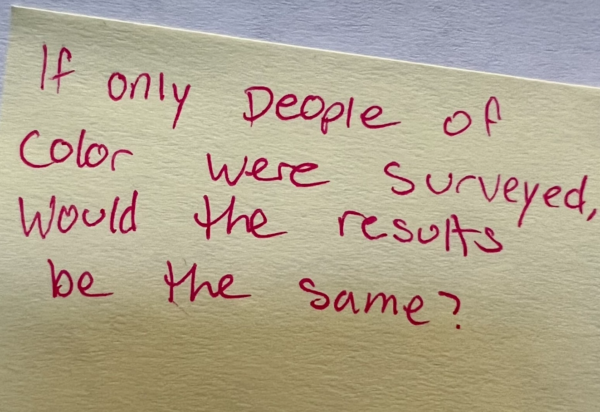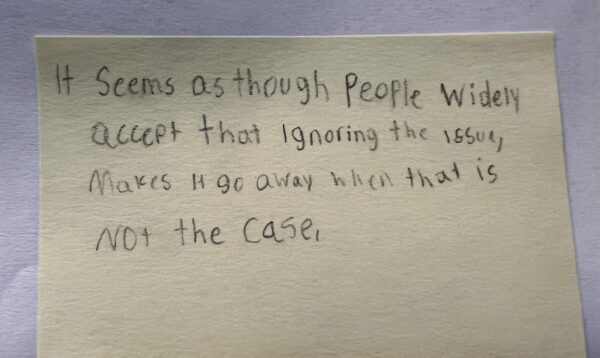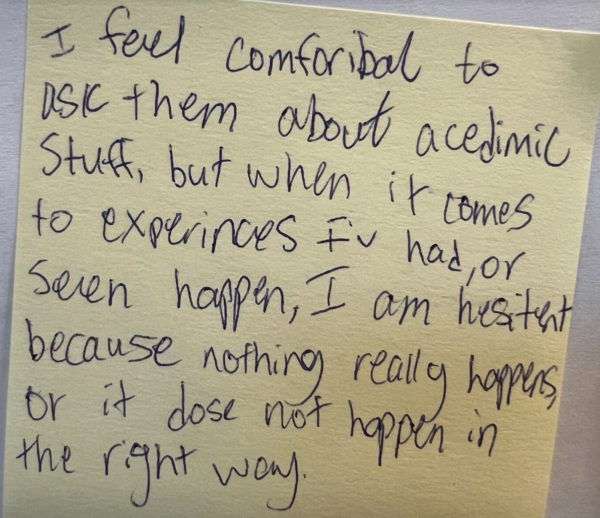This fall, all of our students had the opportunity to take perception surveys in their homeroom through a program called Panorama. The results gave us invaluable data that our leadership teams have been digging into for months.
The biggest take away has been, perhaps unsurprisingly, that we need more student voice in our equity and leadership work. As I wrote last year, students joining our staff equity team was a powerful experience and we’ve seen student leadership continue to grow from that first meeting.
This fall, we hosted a Student Equity Summit with speaker, author, educator, and consultant Erin Jones at the A.S.H.H.O cultural center in Tumwater. Eating food together, being in community, and learning from each other outside of school in a nonwhite space was eye opening for students and adults.
The last thing we wanted to do was lose the momentum of that day, so we hosted a second summit in February where we gave students a chance to dig into the Panorama data and have conversations about their experiences at school.
We asked students from the Social Equity Club, which I advise, to plan the event and they chose the data they thought were the most interesting and gave input on our student edition of Speak up at School training. They were just as excited as we were to launch and to hear from their fellow students.
The morning of, donuts at the ready, we gave students the results and asked them: What do you notice about this data? Why do you think this is occurring on campus? Does this match your experience?
Right away, their answers were insightful.
The first question “How fairly do students at your school treat people from different races, ethnicities, or cultures?” had results that were 66% favorable and students were quick to dissect those numbers. Many wanted to disaggregate the results because as students of color, they definitely felt they didn’t fall into the 66%.

Next, we looked at the question “How often do students at your school have important conversations about race, even when they might be uncomfortable?” which was only 42% favorable. The overwhelming consensus was that students and educators alike are afraid to have these tough conversations. All teachers across the district have been trained with Speak up at School, but these students told us they haven’t seen a change.
“People think their comfort is more important than someone’s safety,” one student wrote. “If you never talk about it or be in that uncomfortable place, you’re never going to grow or get out of your bubble.”

Our third question had abysmally low results; only 23% favorable. “How connected do you feel to the adults at your school?” Students were clear that it’s obvious when a teacher really cares, (“when they have your heart” as one student put it) but many feel they don’t think teachers understand their experience outside the classroom, especially around issues of race or their cultural experience.

We left the summit with piles of sticky notes, key insights, and a whole new set of questions like puzzles to solve.
Before the summit, we adults had parsed through the data, but the morning clearly showed us that without student input, we’re probably missing the forest for the trees. Using the last question as an example, we’re now asking ourselves: What does it actually mean for students to feel connected to the adults in the building? How would they define connectedness? And, perhaps most importantly, is that even what they want?
No one knows the student experience better than our students and while we want to solve problems for them, it’s key that we remember, they are our best problem solvers.
On the heels of this event, the Social Equity Club is planning what they want to do next (board meetings and summit 3.0 here we come!) and they’ve been clear about the nonnegotiable changes they want to help enact. If we adults continue to ask students to show up, be vulnerable, share their experiences, and contribute their ideas, we’d better be prepared to listen, learn, and make real change.
This is such a powerful example of student voice. On top of that, it is excellent proof that data without context is misleading. Kudos to your students for their insight and inspiration! This is great work.